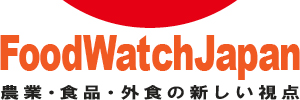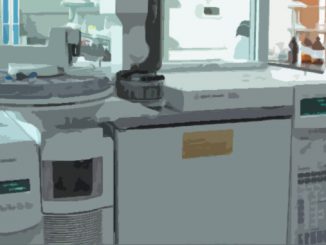
日本の科学者は、花粉症に悩む多くの人々を救うため、その症状を緩和するコメの品種を開発中である。これはしかし、遺伝子組換え植物を使って重要な医薬品を作る(「医薬用」作物と称される)という現代バイオテクノロジーの利用の一例にすぎない。しかしながら、この技術が受け入れられるには、技術的および社会的な双方のハードルを超えなければならない。初の医薬用作物の多くは、トウモロコシ、イモ、コメといった一般的な食用作物である。果たしてこれらの開発は、食糧供給に脅威をもたらすのだろうか。
Japanese scientists are working to produce a variety of rice that will protect consumers against tree pollen allergy, a condition that affects many people in Japan. This is but one of several examples of the use of modern biotechnology to produce important medical products using transgenic plants, referred to as “pharma” crops. Nevertheless, major hurdles both technical and social must be resolved for this technology to be successful. Many of the first pharma crops were varieties of common food crops, such as corn, potatoes, and rice. Do these developments pose threat to the food supply?
1989年、研究者たちは遺伝子組換えタバコで抗体を生成すると発表した。いわゆるバイオファクトリーとして、畑で育てられる植物から抗体やワクチンまたそのほか医学的に重要な化合物を作り出すことを追及する、新しい研究開発分野が切り開かれた。Charles Arntzen博士(その当時はCornell大学に在籍、現在はArizona州立大学)は、イモを用いてワクチンを作る研究の先駆者であった。その目的は、遺伝子組換え作物由来の「食べるワクチン」によって乳幼児下痢症やコレラから開発途上国の子供たちを守ることにあった。
私は、米国食品医薬品局(FDA)で働いていたころ、一度Arntzen博士に会ったことがある。現在開発途上国でワクチンが広く使われることを妨げている主な問題を回避しようとして博士が考えたのは、冷蔵も注射することも必要としないワクチンを作ることであった。彼の初期の研究は、遺伝子組換えジャガイモの摂取によって免疫反応が刺激されることを示すものだった。博士は、バナナといった開発途上国で簡単に手に入るであろう食用作物中にワクチンを開発しようとしていた。あるいは、輸送や保存をするに当たって冷蔵が不要となるよう、ワクチンを含む食物を乾燥させようとしていた。
その期待は大きかったのだが、革新的な物事の常として、予期せぬ出来事がその進展を妨げた。一つには、遺伝子組換え植物中のたんぱく濃度が植物ごとに異なることが、バッチ間で一貫性があることという規制基準を満たすことを難しくしていた。さらに、大手製薬企業は、この生まれたばかりの技術を支援しようという興味をほとんど示さなかった。最も困難な課題は、食用作物を非食用物の生産のために利用することが適切かどうかという問いと、人々が「薬品入り朝食」などというものがあるというような反応をするのではなかろうかという恐れだった。
食糧供給に関する懸念が高まったのは02年。ブタワクチン用のたんぱく質を作るためProdiGene社が開発した組換えトウモロコシが、収穫されたダイズに少量含まれているのが見つかった時である。その実験用のトウモロコシはそのダイズが栽培された畑にそれよりも前に栽培されたものだった。ダイズと一緒に育ったその「自生」トウモロコシ(かつてそれが栽培されていたなごりとして育った植物)は、ダイズと分別されることがなかったのだ。
食糧供給の交差汚染の懸念は、Starlinkトウモロコシの一件によって米国で高まった。Starlinkは動物用飼料または工業的用途としてのみ認可されていたが、うかつにも食糧供給に入り込んでしまった。この出来事は、花粉の飛散によって、さらに貯蔵時または農産品の流通段階で商業品種と混ざってしまうという交差汚染の可能性があることを浮き彫りにした。これによって米国農務省(USDA)は、医薬用作物のフィールドテストの要件を厳しくすることにした。
FDAの医薬品サイドの規制当局者は、医薬用作物は有益な治療用物質を作り出す新しい有望な手段となり得ると考えている。食品安全の規制当局者からすると、一般の食用作物を使うことは、医薬用作物が食糧供給に入り込まないことを確実にしなければならないという課題をつきつけるのだ。
私がFDAにいた頃、私たちはこう考えていた。その当時、医薬用作物中で組換えられたたんぱく質は、少量消費される分には健康が脅かされることはないだろうと。その組換えたんぱく質は毒素でもアレルゲンでもなく、さらに食品中のほかのたんぱく質と同様消化されてしまう。
一番の懸念は、国民の否定的な反応であった。なぜなら、それによって政府の農業バイオテクノロジー規制に対する国民の信頼が失われてしまう恐れがあったからだ。これは、Ventria Bioscience社の米国での苦い経験によって明らかだ。同社は、コメの産地であるカリフォルニア州とミズーリー州でラクトフェリンとリゾチームを作り出すよう遺伝子操作したコメを栽培しようとしたが果たせなかった。従来型のコメの生産者が、政府によってフィールドテストの規制が厳しくされたにもかかわらず、交差汚染を恐れたのだ。さて、近年みられる進歩は、食糧供給に混入するという懸念を取り除いてくれるかもしれない。
研究者たちは、遺伝子操作をした医薬用植物を利用するが、それを圃場で栽培しなくてもいい新しい方法を編み出している。肝臓や骨に障害をもたらすゴーシェ病治療用の酵素を作るために、ニンジンの細胞を透明なプラスチックの袋の中で培養している。別の研究者は、医薬用作物を作るにあたって遺伝子組換え技術を用いないで済むような研究を行っている。彼らは、タバコをアグロバクテリウム(作物の遺伝子を操作するために一般的に使われるバクテリア)の溶液に浸す。その溶液には、目的の薬品を作り出すための遺伝子が含まれており、その後いくつかの段階を得て、数年ではなく数週間で目的のタンパク質が量産できるようになる。さらに、遺伝子発現のレベルが強化されることで、そのタバコは圃場ではなくグリーンハウスでの栽培が可能となる。
Icon Genetics社というドイツ企業は、がんの治療薬を作るために編み出された「マグニフェクション」という手法を活用したいと望んでいる。別の研究者はまた、遺伝子組換えタバコをバイオファクトリーとして利用している。Stanford大学の研究者は、米国では最も一般的な種類の血液や骨髄のがんである非ホジキンリンパ腫に特異的な抗体を作るタバコを遺伝子工学によって作り出した。非食用作物の利用や医薬品を作るために遺伝子を操作した食用作物を育てる圃場を必要としない方法は、製薬技術についての懸念の多くを静めることだろう。
しかしながら、今でも食用作物の医薬用としての利用が研究されている。なぜなら、その方が遺伝子の操作が比較的容易であり、かつ、醗酵によって医薬品を生成するときよりも低コストで目的のたんぱく質が十分な量を得られるからだ。例えば、米国ではVentria Biosciences社が、従来のコメが生産されていない地域でラクトフェリンやリゾチームを作る遺伝子組換えコメの開発を続けている。フランスでは、Meristem Therapeutics社が嚢胞性線維症の治療のために開発したトウモロコシ由来のリパーゼが臨床試験の最終段階に近づきつつある。
米国では医薬用作物のフィールドテストの要件が科学的知見やデータの蓄積によってより厳しくなった。それが食糧供給への交差汚染を防ぐために十分であるかどうかはまだ分からない。日本の研究者が、花粉症のあのつらい症状から人々を開放するため、日本で最も広く栽培されている作物を用いることに付随するその問題に、いかように取り組むのか興味深いところだ。
参照: Science, vol: 320, 25 April 2008, pp, 473-5
*本稿で表記する「バイテク」は、遺伝子組換えを意味するものとする(FoodScience編集部)
In 1989 researchers described the production of antibodies in transgenic tobacco plants, opening a new field of research and development that sought to produce antibodies, vaccines, and other medically important compounds from plants grown in the field, essentially as bio-factories. Dr. Charles Arntzen, who was at Cornell University at the time and is now at Arizona State University, pioneered research using potatoes to produce vaccines that would protect children in developing countries from infant diarrhea and cholera by means of an edible vaccine derived from transgenic crops.
I had an opportunity to meet Dr. Arntzen when I was working at the FDA. His vision was to make a vaccine that would not require refrigeration or injection to circumvent some of the major problems that currently prevent vaccines from being widely used in developing countries. His initial studies showed that an immune response could be stimulated by ingestion of the transgenic potato. He hoped to develop the vaccine in a food crop that could be readily available in developing countries such as banana or to dry the food containing the vaccine so refrigeration would not be needed for transportation and storage.
It sounded promising, but as is often to case with new innovations, unforeseen events delayed progress. In part, the concentration of protein in transgenic plants varied from plant to plant making it difficult to meet regulatory requirements for batch to batch consistency. Further large pharmaceutical firms showed little interest in supporting this nascent technology. The most challenging problem arose from questions about the suitability of using food crops to produce non-food substances, and the concern that public reaction would be that there are “drugs in breakfast cereal.”
Concern regarding the food supply was heightened in 2002 when harvested soybeans were found to contain low levels of corn engineered by ProdiGene, Inc. to produce a protein for a pig vaccine. The experimental corn had been grown previously in the field used to grow the soybeans, and “volunteer” corn plants (plants that grow as a result of a previous planting) that had grown with the soybeans had not been separated from the soybean plants.
Concern about cross contamination of the food supply had been heightened in the U.S. government by the Starlink corn episode, where biotech corn approved for animal feed and industrial use only was inadvertently introduced into the food supply. This event highlighted the likelihood of cross contamination via pollen flow and mixing of commercial varieties during storage and distribution of commodity agricultural products, and led the U.S. Department of Agriculture to strengthen the requirements for field testing of pharma crops.
Regulators on the pharmaceutical side of FDA believe that pharma crops offer a potentially useful new means of producing valuable therapeutics. From a food safety regulator’s perspective, the use of common food crops presents challenges to ensure that pharma crops do not enter the food supply.
When I was with the FDA, we believed that the proteins that were then being engineered in pharma crops at that time would not pose a threat to health if consumed in small amounts in food. The proteins were not toxins or allergens and would be digested like other proteins in the diet.
The major concern would likely to be adverse public reaction leading to loss of confidence in the government’s regulation of agricultural biotechnology. This is illustrated by the difficulty that Ventria Bioscience experienced in the U.S. when it tried unsuccessfully to grow rice engineered to produce lactoferrin and lysozyme in the states of California and Missouri, both states where rice is grown. Growers of conventional rice were fearful of cross contamination, in spite of the increased field testing requirements required by the government. Recent advances may obviate the concern about the integrity of the food supply.
Researchers have found new ways to use plants that do not involve growing fields of transgenic pharma crops. Carrot cells are being grown in clear plastic bags to produce an enzyme to treat Gaucher disease, a disease that leads to liver and bone problems. Other researchers avoid the need to develop transgenic plants. They dip tobacco plants in a solution of Agrobacterium (the bacterium commonly used to engineer crops) that contains the genes for a desired drug and with some other steps are able to produce increased amounts of the desired protein in weeks instead of years. Further because of the enhanced levels of gene expression, the plants can be grown in greenhouses rather than in the field.
German firm, Icon Genetics, hopes to use “magnifection” as this method has been called to produce a pharmaceutical product to treat cancer. Other researchers are also using transgenic tobacco as bio-factories. Stanford University researchers have engineered tobacco plants to produce antibodies specific to non Hodgkins lymphoma, the most common form of blood or bone marrow cancer in the U.S. The use of non-food crops and methods that do not require growing fields of food crops engineered to produce pharmaceuticals will allay many of the concerns about pharma technology.
However, some food crops are still being researched as pharma crops because they are relatively easy to modify genetically and the desired proteins are expected to be obtained in sufficient quantities at lower cost than would be the case for fermentation derived drugs. For example, in the U.S. Ventria Biosciences is pursuing the use of rice to produce lactoferrin and lysozyme by growing their transgenic rice in a region where conventional rice is not grown , and Meristem Therapeutics, in France, is nearing the final clinical testing phase for lipase to treat cystic fibrosis derived from corn.
The requirements for field tests of pharma crops have been strengthened in the U.S. based on accumulated scientific knowledge and data. Whether the new requirements will be sufficient to prevent cross contamination of the food supply remains to be seen. It will be interesting to see how Japanese researchers deal with the problem of using the most commonly grown food crop in Japan to produce a product that can protect individuals from the misery of Spring allergy.
Reference: Science, vol: 320, 25 April 2008, pp, 473-5
※このコラムは「FoodScience」(日経BP社)で発表され、同サイト閉鎖後に筆者の了解を得て「FoodWatchJapan」で無償公開しているものです。



